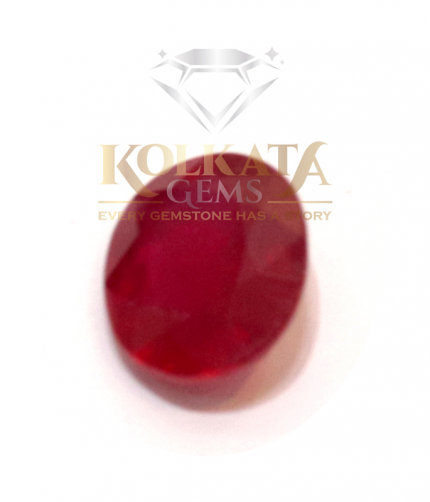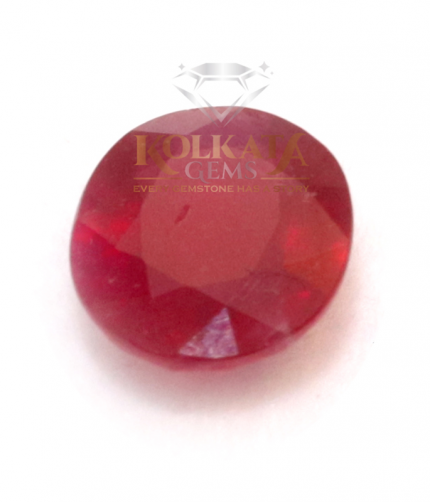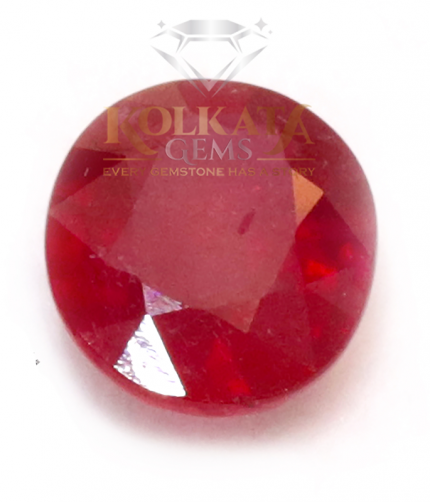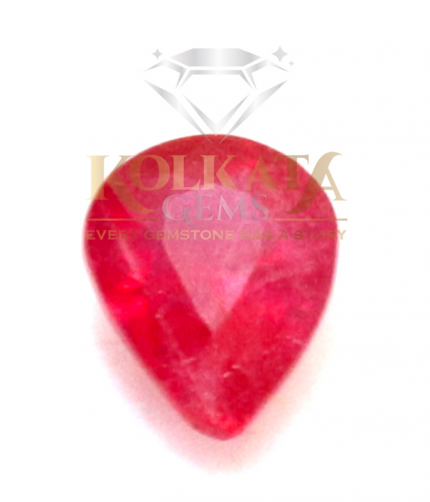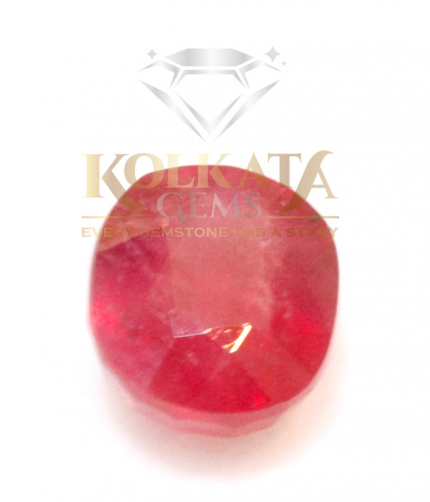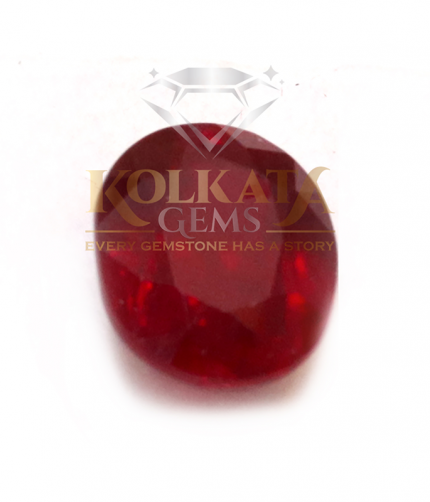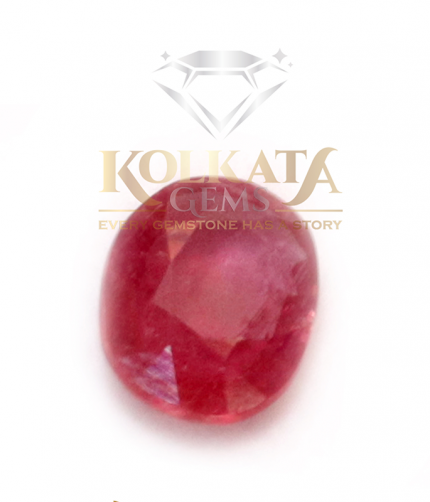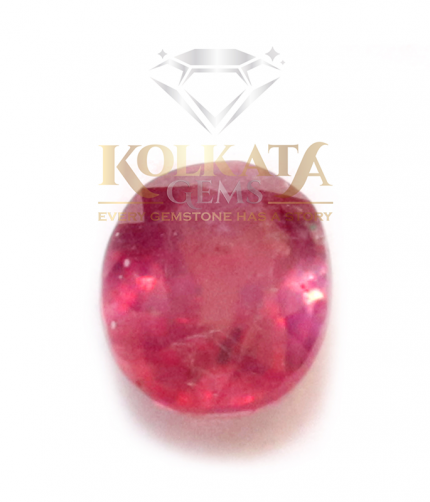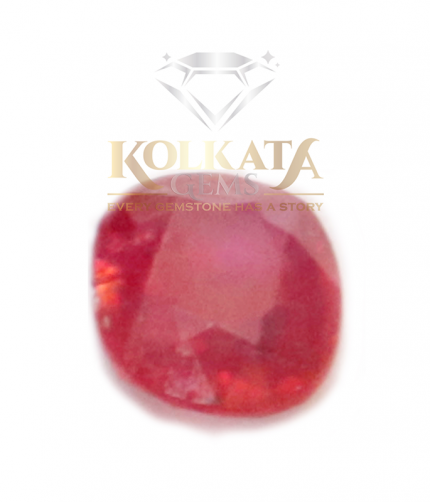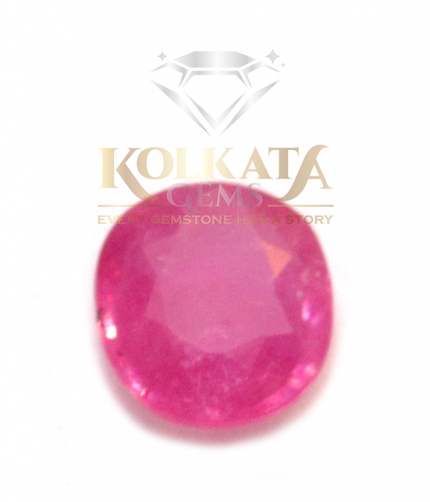Ruby (माणिक / চুনি) 01
How is Ruby Formed? (With Chemical Composition)
Formation Process:
Ruby is a precious gemstone that belongs to the corundum mineral family. It forms under extreme geological conditions when aluminium-richrocks undergo metamorphism or crystallize from igneous processes in the presence of chromium-the element responsible for ruby’s rich red color.
Ruby (माणिक / চুনি) 02
Ruby, also known as Manik, is a naturally occurring precious gemstone from the corundum (aluminum oxide) family. Its vibrant hues—ranging from soft pink to deep blood red—are attributed to the presence of chromium in its structure.
As one of the four most valuable gemstones, Ruby holds immense significance in both jewelry and astrology, making it highly sought after in the market. The gemstone’s value is determined by three key factors:
- Color – The most prized shade is pigeon blood red.
- Cut – A well-cut Ruby enhances its brilliance and luster.
- Carat – Larger, high-quality Rubies are rarer and more expensive.
Ruby (माणिक / চুনি) 03
Ruby, also known as Manik, is a naturally occurring precious gemstone from the corundum (aluminum oxide) family. Its vibrant hues—ranging from soft pink to deep blood red—are attributed to the presence of chromium in its structure.
As one of the four most valuable gemstones, Ruby holds immense significance in both jewelry and astrology, making it highly sought after in the market. The gemstone’s value is determined by three key factors:
- Color – The most prized shade is pigeon blood red.
- Cut – A well-cut Ruby enhances its brilliance and luster.
- Carat – Larger, high-quality Rubies are rarer and more expensive.
Ruby (माणिक / চুনি) 04
How is Ruby Formed? (With Chemical Composition)
Formation Process:
Ruby is a precious gemstone that belongs to the corundum mineral family. It forms under extreme geological conditions when aluminium-richrocks undergo metamorphism or crystallize from igneous processes in the presence of chromium-the element responsible for ruby’s rich red color.
Ruby (माणिक / চুনি) 05
Ruby, also known as Manik, is a naturally occurring precious gemstone from the corundum (aluminum oxide) family. Its vibrant hues—ranging from soft pink to deep blood red—are attributed to the presence of chromium in its structure.
As one of the four most valuable gemstones, Ruby holds immense significance in both jewelry and astrology, making it highly sought after in the market. The gemstone’s value is determined by three key factors:
- Color – The most prized shade is pigeon blood red.
- Cut – A well-cut Ruby enhances its brilliance and luster.
- Carat – Larger, high-quality Rubies are rarer and more expensive.
Ruby (माणिक / চুনি) 06
How is Ruby Formed? (With Chemical Composition)
Formation Process:
Ruby is a precious gemstone that belongs to the corundum mineral family. It forms under extreme geological conditions when aluminium-richrocks undergo metamorphism or crystallize from igneous processes in the presence of chromium-the element responsible for ruby’s rich red color.
Ruby (माणिक / চুনি) 07
Ruby, also known as Manik, is a naturally occurring precious gemstone from the corundum (aluminum oxide) family. Its vibrant hues—ranging from soft pink to deep blood red—are attributed to the presence of chromium in its structure.
As one of the four most valuable gemstones, Ruby holds immense significance in both jewelry and astrology, making it highly sought after in the market. The gemstone’s value is determined by three key factors:
- Color – The most prized shade is pigeon blood red.
- Cut – A well-cut Ruby enhances its brilliance and luster.
- Carat – Larger, high-quality Rubies are rarer and more expensive.
Ruby (माणिक / চুনি) 08
How is Ruby Formed? (With Chemical Composition)
Formation Process:
Ruby is a precious gemstone that belongs to the corundum mineral family. It forms under extreme geological conditions when aluminium-richrocks undergo metamorphism or crystallize from igneous processes in the presence of chromium-the element responsible for ruby’s rich red color.
Ruby (माणिक / চুনি) 09
Ruby, also known as Manik, is a naturally occurring precious gemstone from the corundum (aluminum oxide) family. Its vibrant hues—ranging from soft pink to deep blood red—are attributed to the presence of chromium in its structure.
As one of the four most valuable gemstones, Ruby holds immense significance in both jewelry and astrology, making it highly sought after in the market. The gemstone’s value is determined by three key factors:
- Color – The most prized shade is pigeon blood red.
- Cut – A well-cut Ruby enhances its brilliance and luster.
- Carat – Larger, high-quality Rubies are rarer and more expensive.
Ruby (माणिक / চুনি) 10
How is Ruby Formed? (With Chemical Composition)
Formation Process:
Ruby is a precious gemstone that belongs to the corundum mineral family. It forms under extreme geological conditions when aluminium-richrocks undergo metamorphism or crystallize from igneous processes in the presence of chromium-the element responsible for ruby’s rich red color.
Ruby (माणिक / চুনি) 11
Ruby, also known as Manik, is a naturally occurring precious gemstone from the corundum (aluminum oxide) family. Its vibrant hues—ranging from soft pink to deep blood red—are attributed to the presence of chromium in its structure.
As one of the four most valuable gemstones, Ruby holds immense significance in both jewelry and astrology, making it highly sought after in the market. The gemstone’s value is determined by three key factors:
- Color – The most prized shade is pigeon blood red.
- Cut – A well-cut Ruby enhances its brilliance and luster.
- Carat – Larger, high-quality Rubies are rarer and more expensive.



